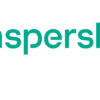 In Frost & Sullivan’s recent survey seeking end-user perspectives on navigating digital transformation globally, 32 percent of IT professionals cited security concerns as their top challenge. This includes cybercrime and espionage, malware, and cloud services.
In Frost & Sullivan’s recent survey seeking end-user perspectives on navigating digital transformation globally, 32 percent of IT professionals cited security concerns as their top challenge. This includes cybercrime and espionage, malware, and cloud services.
Aligning IT with business strategy and/or lacking a clear IT strategy were also top concerns. Interestingly, 23 per cent of respondents selected improving digital presence as a major challenge, with skills shortage a bigger issue in Asia Pacific and North America than other regions.
Frost & Sullivan’s research survey, “An End-User Perspective on Navigating Digital Transformation, Global, 2017,” finds that about one-third of respondents say that reducing operational costs, improving customer experience, and improving digital presence will be top drivers for IT investment over the next two years.
The survey aimed to understand the IT-related challenges facing organizations; monitor the status of digital transformation, including newer solutions such as Artificial Intelligence, Augmented & Virtual Reality, and mCommerce; assess current and future uses of business communication technologies; evaluate drivers behind investments in communication technology; appraise IT budgets; and gauge IT and communication trends.
“While cybersecurity tops the list of investments over the next two years, customer experience management and big data and analytics will see significant deployments as well,” said Alpa Shah, Vice President, Digital Transformation at Frost & Sullivan. “Banking, insurance and finance, and retail industries are the bigger investors in technologies that improve customer experience, with retailers plan to spend on solutions that improve sales and marketing effectiveness.”
When asked about critical investments for digital transformation success over the next five years, data analytics and communications/collaboration tools integration with other business software (Microsoft Office, Google G-suite, CRM, ERP, vertical apps) came out on top. About 75 percent of the respondents rated these two solutions as either somewhat important or very important.
“The greatest percentage increase in budget will occur in the government, education, and healthcare industries. This is likely due to funding, need for security, and to keep up with policy changes,” noted Shah. “Security was selected as the top investment priority for each of these industries over the next two years.”














































































































